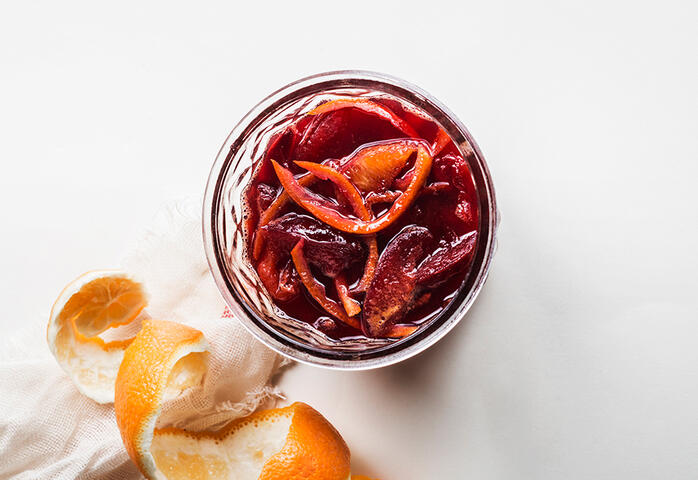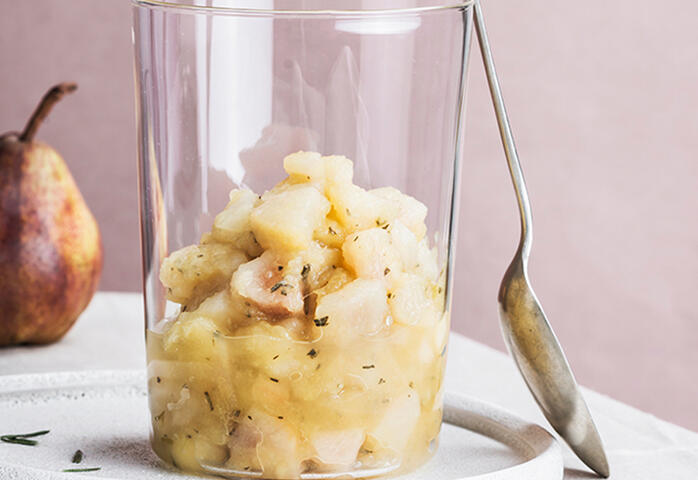
©©Foodphoto - Lisa Valcke
Did you know? What is currently known as Sirop de Liège already existed in the Middle Ages and was made by reducing apple and/or pear juice. It was a way to make use of fallen fruit. Dates were added later on. You can spread this paste on bread or use in sauce.
Sweetened jams and marmalades as we know them today do not appear in 15th-century cookery books. What kinds of sweets were served after a medieval meal? A fruit pie recipe from 1380 seems surprisingly up to date: apples, herbs, figs, raisins, quinces and pears are fried with saffron – a typically medieval seasoning – and then baked in shortcrust pastry. Bakers and pastrycooks looking for a local and seasonal dessert can draw inspiration from this recipe.

Ingredients:

Ingredients: